By Sam Salem and Peter Nyegaard Jensen, Wind Cluster
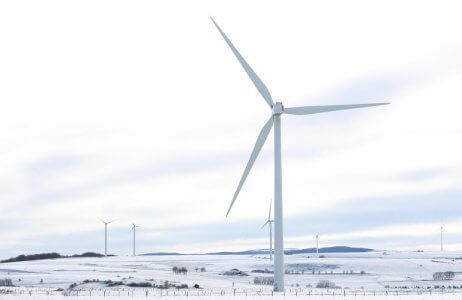 The February 2021 freeze event in Texas attracted attention to wind turbine behavior in cold weather. Wind generation fell short of expected output but was not the main driver of the extensive power outages experienced across the state. Wind turbines have proved to generate power successfully in cold environments (many northern European countries get a significant portion of their electricity from wind power year-round) if the right preparations are made. And with many climate scientists expecting an increase in extreme weather events — including freezing temperatures — cold climate operation presents a niche market for wind turbine OEMs if they can keep blades spinning during winter.
The February 2021 freeze event in Texas attracted attention to wind turbine behavior in cold weather. Wind generation fell short of expected output but was not the main driver of the extensive power outages experienced across the state. Wind turbines have proved to generate power successfully in cold environments (many northern European countries get a significant portion of their electricity from wind power year-round) if the right preparations are made. And with many climate scientists expecting an increase in extreme weather events — including freezing temperatures — cold climate operation presents a niche market for wind turbine OEMs if they can keep blades spinning during winter.
The accumulation of ice on the surface of wind turbine blades may cause a harmful unbalance on the rotor, causing issues with production and structural design loads. Ice shedding from a blade can damage other blades, hit the roof of the nacelle or even cause hazardous situations for properties and passers-by.
A sensitive ice detection system will be the first step to provide an early warning. Looking at the weather, operational signals and using commercial ice detectors are a good starting point. There are many ways to detect ice formation: visual, mechanical, differential pressure, vibration, ultrasonic and optical. Modern ice detectors, like the ones by New Avionics Corp., are entirely optical. A tele-component light source and receiver monitor the opacity and refractive index of whatever substance is in contact with the detector probe. The optical ice detector works as a combined optical spectrometer and optical switch. A change in opacity registers as rime ice; a change in refractive index registers as clear ice. Modern ice sensors are generally lower in cost, lightweight and smaller in size. Relay contacts send a “go/no-go” or “ice/no-ice” signal to the host control system. They run on a DC power source of 8 to 30 V and need only 2 W of power to operate. Ice detection can be installed as a retrofit on the turbines in service.
 In places like Texas, where wind-turbine icing is rare, stopping the turbine may be the cost-optimal solution. To minimize production loss due to icing, a combination of forecasting, detection and mitigation should be used. Better predictability also lets operators determine if and when to shut down wind farm operations altogether. There are instances when the sun can melt the ice. If models indicate severe icing probability, ice forming too thick or too fast, then stopping the wind turbines will be the action to take. In this case, forecasting plays a big role in mitigating outage risks.
In places like Texas, where wind-turbine icing is rare, stopping the turbine may be the cost-optimal solution. To minimize production loss due to icing, a combination of forecasting, detection and mitigation should be used. Better predictability also lets operators determine if and when to shut down wind farm operations altogether. There are instances when the sun can melt the ice. If models indicate severe icing probability, ice forming too thick or too fast, then stopping the wind turbines will be the action to take. In this case, forecasting plays a big role in mitigating outage risks.
In areas where icing may happen more often, it may be advisable to also consider ice-prevention measures. Ice prevention systems allow wind turbines to continue operating during winter months. There are a number of ice prevention systems that include passive systems such as ice-phobic or ice-resistant coatings, and active systems such as hot air or electro-thermal systems.
Ice detection and ice prevention technologies are improving, and their costs are going down. Energy production in the cold season with strong winds and high electricity prices is a big opportunity for wind turbines. But it requires better forecasting, early detection and risk mitigation.
Sam Salem is the regional manager of Wind Cluster for USA and Canada. Peter Nyegaard Jensen is the managing director of Wind Cluster ApS in Denmark.
This story uses information from previous original Windpower Engineering & Development and Wind Systems reporting, and Lasse Hietikko, Business Development Manager of Wicetec, was interviewed for source material.
Filed Under: Featured

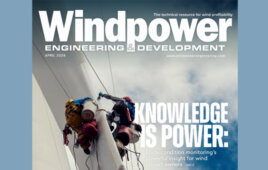
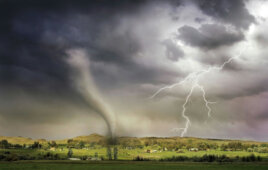
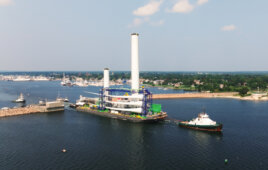
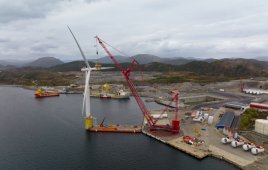
“I’ve heard of Wind Turbines working in -15ºF weather and can probably go up to -20ºF ish.”
My country, Finland, is a northern country that currently produces 10 % of it’s electricity with wind power. We experience temperatures from -15 to -20 ºF in wind power production areas in most winters, and I have never heard low temperatures to be a difficult problem. Icing is something that you have to be prepared for, though (in higher temperatures, actually), but there are solutions to that, for example warming of the blades, as explained in the article.
Think outside the box. At DSX we modify friction. Our DSX Defender II protective wax applied to eight passenger private jets has saved US$1,000 per flight Costa Rica to Orlando to Costa Rica for more than six month. Minimal testing with wind turbines has been done in the UK. Indications are good. DSX EXTRA, engine additive, in a Cummins diesel for more than 2 million miles improved fuel economy by 15% and lowered operating temperature for lubricants 45 Deg F to 60 Deg F. Information in website. Some of data developed in testing by government scientist before retirement. Currently communicating with project management from companies in UE, the UK and South and Central America. Supportive data included in section of website on auto racing. Website opens to Class 8 tractor with information on Cummins engine – With DSX Extra, including pictures of engine parts after failure – metal fatigue – at 2 million miles. Think about internals of mechanicals in nacelles when looking at pictures, specifically reduction gear, then think about other mechanical applications.
Mc Murdo and Ross Island bases in Antarctica both have wind turbines!
The former of these has a year round average temperature of 0 Fahrenheit – 17.7 centigrade!
Cold is not the problem – ice formation is, however with the right measures this can be mitigated as stated by the article.
The power output of my 50kW wind turbine drops off substantially as ice accumulates on the blades. The anemometer and vane also freeze up and are good indicators of blade icing. Sometimes I mannually take my turbine off line if the blades become unbalanced from ice shedding. Because ice events are so variable some human intervention seems necessary. I would welcome advanced blade coatings which could inhibit ice formation.
The big thing people tend to forget is this type of technology is used around the world such as Canada, U.S, and even Sweden. Wind Turbines have a big impact even in cold climates and what allows them to perform is by being equipped with integrated heating devices.
I’ve heard of Wind Turbines working in -15ºF weather and can probably go up to -20ºF ish. Either way, there are ways to allow wind turbines to perform in cold temperatures, but that goes for the same with other alternative energy systems such as solar panels and battery storage.